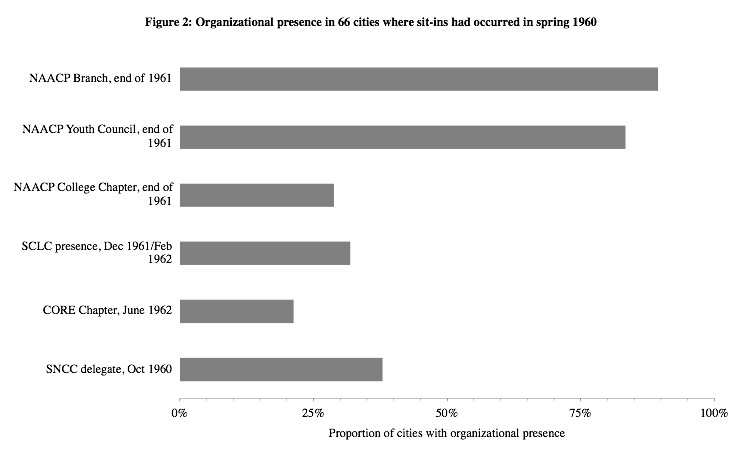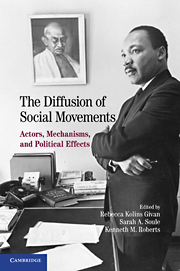
From Protest to Organization:
The Impact of the 1960 Sit-Ins on Movement Organizations
in the American South
Michael Biggs and Kenneth T. Andrews
The
Diffusion of Social Movements: Actors, Frames, and Political Effects,
ed. Rebecca Kolins Givan, Sarah A. Soule, and Kenneth M. Roberts,
Cambridge: Cambridge University Press, 2010

Scholars of social movements have long debated whether collective protest is the product of prior organization. This chapter considers the other side of this relationship: whether the diffusion of protest leads to the growth of movement organizations. Various theories converge on the prediction of a positive causal effect. We investigate how the wave of sit-ins in the American South affected movement organizations—NAACP, SCLC, CORE, and SNCC—in the early 1960s. Qualitative evidence shows that CORE and SCLC, in particular, were keenly aware of the opportunities provided by the rapid diffusion of protest. Nevertheless, there was no substantial increase in membership and no great expansion of organizational presence for existing organizations in the South. Statistical analysis of 334 cities demonstrates that controlling for prior organizational ecology and socio-political characteristics, the occurrence of sit-ins had no discernible positive effect on subsequent organizational growth or expansion.

Michael Biggs, Department of Sociology, University of Oxford